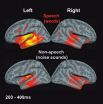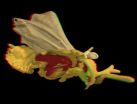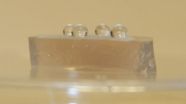(Press-News.org) An unexpected discovery by UCLA life scientists holds promise for the future development of treatments for post-traumatic stress disorder and other anxiety disorders, and potentially for Alzheimer's disease and other memory-impairment diseases.
The researchers, led by UCLA professor of psychology Michael Fanselow, have discovered what may be a completely unexplored drug target for the treatment of anxiety disorders. The research is published Jan. 7 in the journal Science.
Normally, when people or animals experience a frightening event, they learn to fear the place of the event and any signals that were present at the time. This occurs because the nerve cells in certain brain regions increase their ability to excite or stimulate one another, said Fanselow, a member of UCLA's Brain Research Institute.
Most neuroscience research has emphasized how this phenomenon occurs through chemical communication among neurotransmitters flowing across synapses — the space between neurons. However, there are also small, inhibitory neurons in these regions as well, which have direct electrical contact with one another through connecting channels known as "gap junctions," Fanselow said. Gap junctions are very common in invertebrates but rare in mammals, where they are found on only certain inhibitory interneurons.
"Because of this, no one has looked at the importance of these gap junctions for learning, memory and emotion," Fanselow said. "We hypothesized that these gap junctions may be very important. Because the gap junctions cause the inhibitory neurons to fire together, they may cause these inhibitory neurons to act as a pacemaker for the excitatory neurons, making them fire at the same time so they are better able to make fear memories."
Fanselow's research team used several drugs in rats that block the gap junctions and found that they disrupted critical rhythms in the dorsal hippocampus — the brain region most involved in cognition — and prevented fear memories for places from forming. The drugs could block the formation of fear of places when given after the frightening experience.
Neuronal gap junctions may be an unexplored drug target for the treatment of anxiety disorders such as PTSD; they hold promise because giving a regular injection of drugs in a cavity near the abdomen worked as effectively as an injection directly into the brain. In addition, the injections worked when given right after the frightening experience.
"Because we don't know when a person will experience trauma, treatments that can work after the experience hold more promise," Fanselow said.
"The brain has many processes we have not yet explored," he added. "Understanding them and how they normally work can open up new approaches that may help in very prevalent and debilitating diseases, such as anxiety disorders and memory disorders."
Neuronal gap junctions form where inhibitory neurons touch one another. They are like an opening between nerve cells, a gap in the membranes separating the cells from one another; they let the electrical activity in one neuron affect the neuron it touches.
"Our research shows a way that neurons can coordinate their activity, and this coordination is critical for memory formation," Fanselow said. "Perhaps if we had a way of enhancing gap junction function, we may improve memory formation by facilitating gap junctions when memory is impaired by diseases such as Alzheimer's. However, we have not shown this yet."
"I was completely surprised by this discovery," he said. "I really thought we were taking a long shot and was surprised that gap junctions were not only playing a role but that their importance was so great.
"The formation of fear memories is the major cause of anxiety disorders. These disorders are very common and can be very debilitating. Gap junctions appear to be key in coordinating the activity of the network of neurons that produce fear memories, specifically, and probably other memories, generally, as well."
INFORMATION:
The lead author on the Science paper is Stephanie Bissiere, an assistant researcher in Fanselow's laboratory, who last week was selected as a recipient of a Young Investigator Award from the National Alliance for Research on Schizophrenia and Depression.
Other co-authors are Moriel Zelikowsky, a graduate student in Fanselow's laboratory; Ravikumar Ponnusamy, an assistant researcher in Fanselow's laboratory; Nate Jacobs, a former UCLA undergraduate who is currently a graduate student at UC Irvine; and Hugh Tad Blair, a UCLA associate professor of psychology.
The research was funded by the National Institute of Mental Health and the Swiss National Science Foundation.
UCLA is California's largest university, with an enrollment of more than 38,000 undergraduate and graduate students. The UCLA College of Letters and Science and the university's 11 professional schools feature renowned faculty and offer 328 degree programs and majors. UCLA is a national and international leader in the breadth and quality of its academic, research, health care, cultural, continuing education and athletic programs. Six alumni and five faculty have been awarded the Nobel Prize.
For more news, visit the UCLA Newsroom and follow us on Twitter.
END
Babies, even those too young to talk, can understand many of the words that adults are saying – and their brains process them in a grown-up way.
Combining the cutting-edge technologies of MRI and MEG, scientists at the University of California, San Diego show that babies just over a year old process words they hear with the same brain structures as adults, and in the same amount of time. Moreover, the researchers found that babies were not merely processing the words as sounds, but were capable of grasping their meaning.
This study was jointly led by Eric Halgren, PhD, ...
Quality of life measures tend to be most useful for clinical decision-making in trials in which quality of life is the primary outcome, according to a recent study published online January 7 in The Journal of the National Cancer Institute.
There has been increasing interest in the value of patient-reported symptom assessment in trials and their potential usage as primary or secondary endpoints in new trials. Both the World Health Organization and the U.S. Food and Drug Administration have endorsed quality of life, but they are not always incorporated into trials because ...
EAST LANSING, Mich. — Most college students in the United States do not grasp the scientific basis of the carbon cycle – an essential skill in understanding the causes and consequences of climate change, according to research published in the January issue of BioScience.
The study, whose authors include several current and former researchers from Michigan State University, calls for a new way of teaching – and, ultimately, comprehending – fundamental scientific principles such as the conservation of matter.
"Improving students' understanding of these biological principles ...
A study carried out by the University of Granada (UGR) warns of the need to unify existing plans for clinical waste management in the different autonomous communities to improve recycling and waste disposal. There is currently no specific state-wide regulation, just a framework law that the Spanish Ministry of the Environment and Rural and Marine Affairs (MARM) is planning to reform.
"We carried out a comparison of the clinical waste management regulations and plans in place in the autonomous communities in 2008 to see if there were any differences. We observed distinctions ...
Leuven – Scientists attached to VIB and K.U.Leuven have succeeded in decoding a potential new anti-cancer mechanism. The researchers discovered that normalizing abnormal tumor blood vessels through HRG (histidine-rich glycoprotein) prevents metastasis of tumor cells and enhances chemotherapy efficiency. In tumors, vessels formation is disturbed, leading to inefficient delivery of chemotherapeutic drugs and allowing cancer cells to escape to other parts of the body (metastasis). The normalization of tumor blood vessel formation through HRG works by repressing the production ...
When interviewed by the BBC, the now retired BP boss Tony Hayward admitted to his company's insufficient response to the Deepwater Horizon rig accident in the Gulf of Mexico. Could the company have been better prepared for what turned out to be one of the biggest oil disasters in history?
"We were making it up day to day," Hayward said of BP's rescue plan. Together with chairman of the board, Carl-Henrik Svenberg, he was held responsible for 11 dead and 17 injured workers. According to the New York Times, five million barrels of oil leaked into the ocean outside the coast ...
Its stay on this planet was actually meant to be a very short one. Male twisted-wing parasites (Strepsiptera) usually have a life span of only few hours. However, accidentally a specimen of Mengea tertiara, about the size of an aphid, became preserved for 'eternity': during its wedding flight about 42 million years ago it was caught in a drop of tree resin and subsequently almost perfectly conserved in a piece of amber.
PD Dr. Hans Pohl of Friedrich Schiller University Jena (Germany) calls this "a very exceptional stroke of luck." Together with colleagues from Jena, Hamburg ...
Cambridge, Mass., January 7, 2011 – By rethinking what happens on the surface of things, engineers at Harvard University have discovered that Bacillus subtilis biofilm colonies exhibit an unmatched ability to repel a wide range of liquids—and even vapors.
Centimeters across yet only hundreds of microns thick, such slimy bacterial coatings cling to the surfaces of everything from pipes to teeth and are notoriously resistant to antimicrobial agents. The researchers now suspect they know the secret to a biofilm's resiliency.
Published in the January 5th early edition of ...
Scientists have identified the type of cell that is at the origin of brain tumors known as oligodendrogliomas, which are a type of glioma – a category that defines the most common type of malignant brain tumor.
In a paper published in the December 2010 issue of the journal Cancer Cell, investigators found that the tumor originates in and spreads through cells known as glial progenitor cells – cells that are often referred to as "daughter" cells of stem cells. The work comes at a time when many researchers are actively investigating the role that stem cells which have ...
Despite U.S. consumers' threats of protests in response to the redesigned Starbucks logo unveiled yesterday, the new look may be a smart move in the long run as the coffee company expands into Asian markets, according to a Rice University researcher who has studied consumer reaction to logos.
"The logo of a brand is much more than a pictorial representation of the brand," said Rice Professor of Marketing Vikas Mittal, who has co-authored two studies on customers, logos and brand commitment. "For consumers who are highly committed to the brand, the logo represents a visual ...




